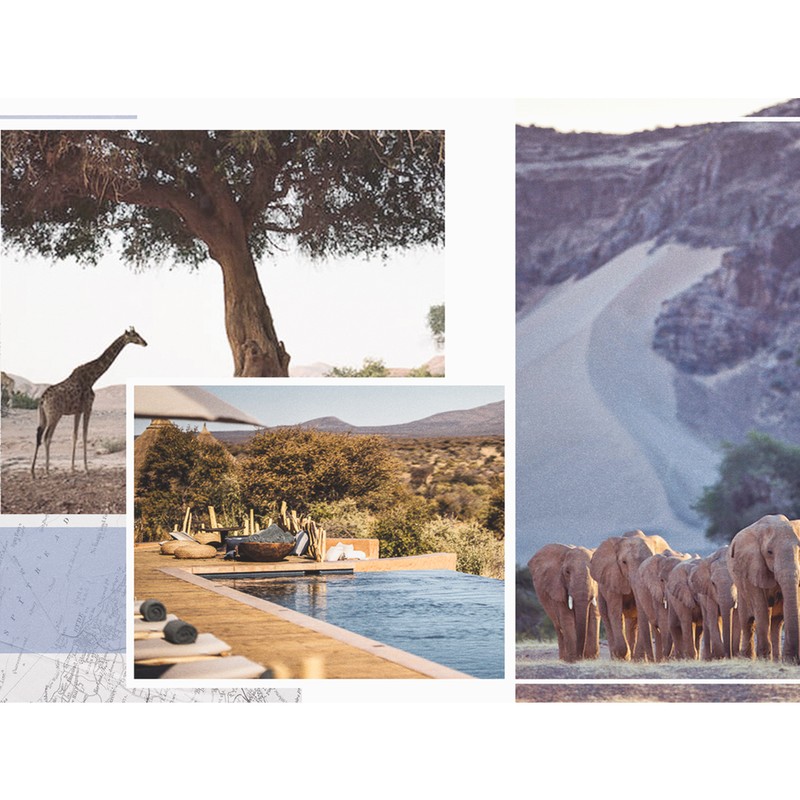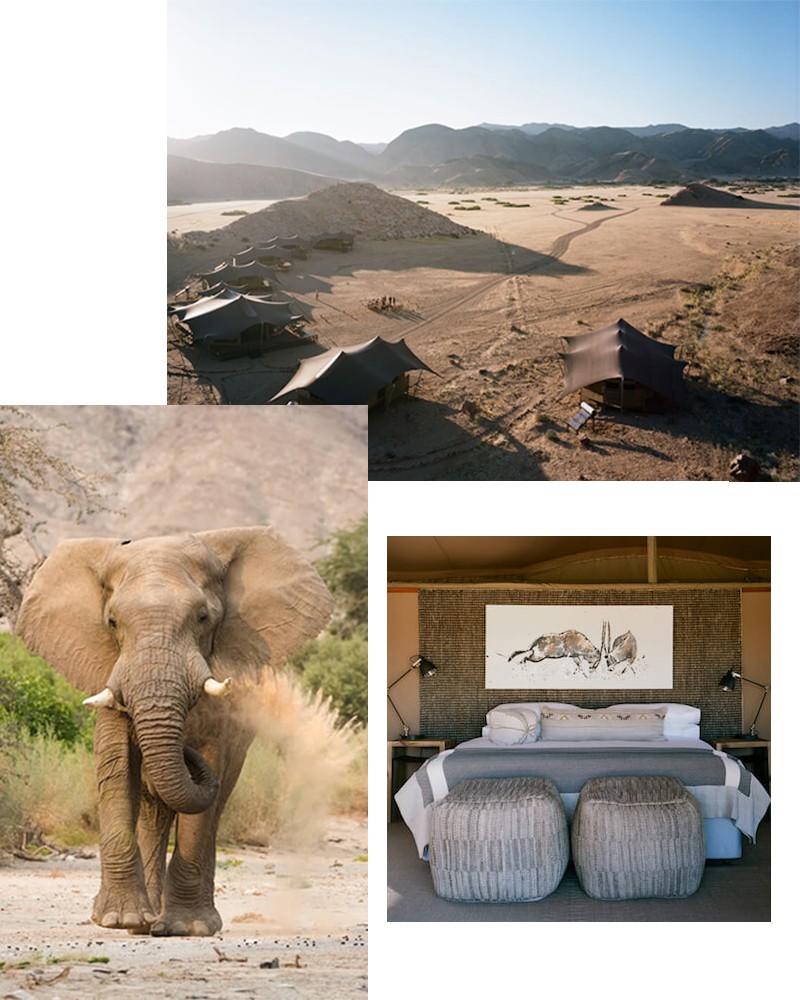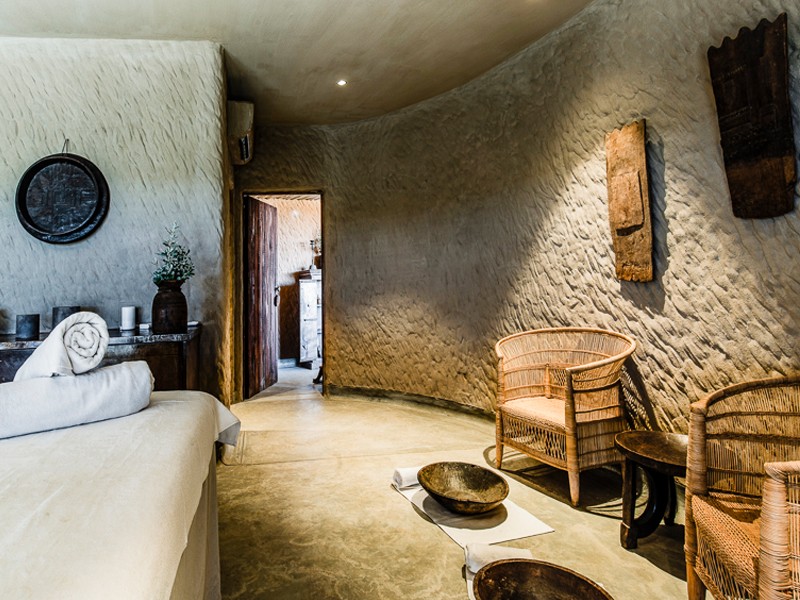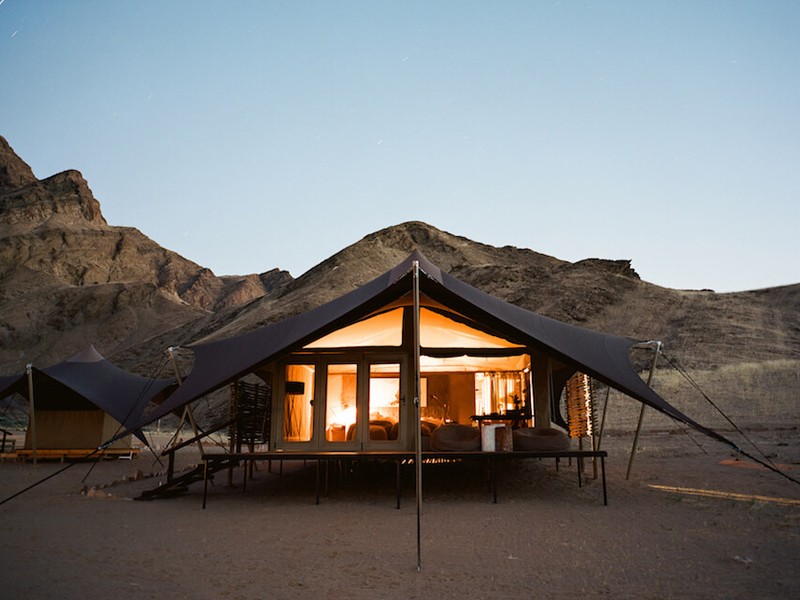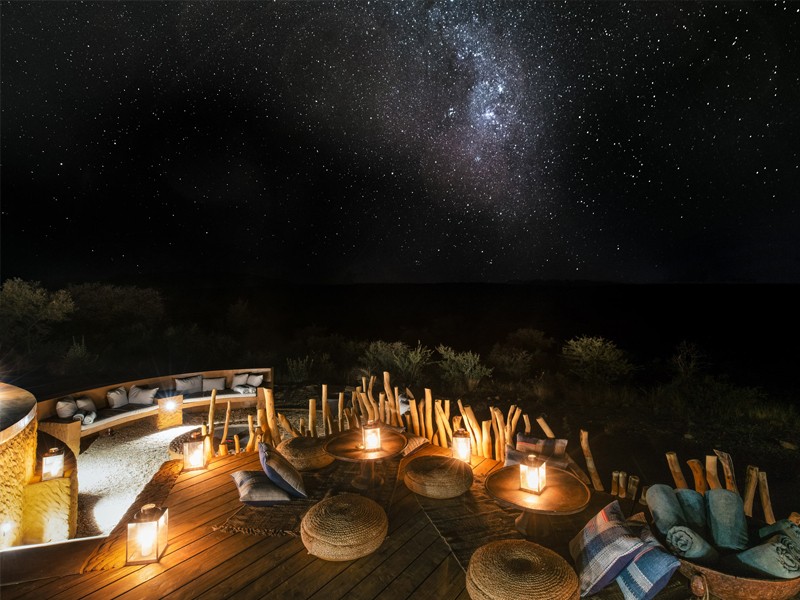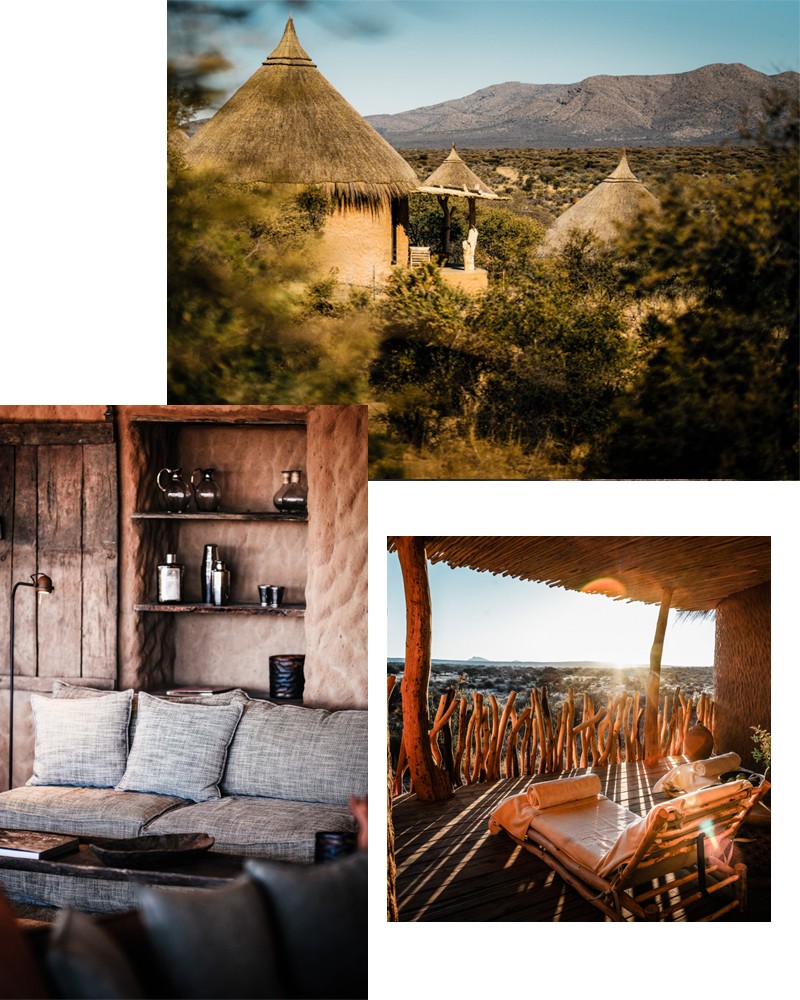Travel Notes: Why Namibia Should Be On Your Travel Wishlist
If you want to experience what the infinite feels like, travel to Namibia. On the west coast of Africa, the country is dense with nothingness; endless, uninhabited panoramas of acacia plains and granite hills and dune canyons stretch on to forever, ending only at a shipwreck-haunted coastline visited by elephants and hyenas.
As of last year, Namibia has entered the news, with several new innovative and stylish camps debuting across the country. Not least Omaanda, outside the capital city of Windhoek, where, upon the advice of his friend Angelina Jolie, hotelier Arnaud Zannier recently opened a ten-hut lodge and a wildlife reserve. The interiors are heaven: thick mud-plaster walls, Belgian linen sofas, and an infinity pool to laze beside on hot afternoons. The lodge sits on 9000 hectares of reclaimed farmland that Zannier rescued from development and which now forms a re-wilding sanctuary for wild dogs, rhino, zebra and elephants, all victims of human-predator conflict. It is a spectacularly comfortable place to stay. Zannier opens their next camp, Sonop, shortly.
Elsewhere Hoanib Valley Camp and Shipwreck Lodge debuted under the auspices of Natural Selection, a safari outfit pushing back-to-basics – but deprivation-free – safari experiences. Hoanib Valley Camp sits in the Kaokoveld Desert in the North of the country, surrounded by clay-dry riverbeds, golden veld, and craggy hills where families of lion find shelter from the merciless heat. Shipwreck Lodge, meanwhile, sits on a bluff overlooking the dramatic Skeleton Coast, a forest of dead trees washed up amongst the enormous, glittering lumps of rose quartz and the rotting shipwrecks on its shore. The camp is equally out of this world: my room was a tipped-up hut with spines breaking free of the roof like sun-bleached whale bones (also a feature of this coastline) and angled windows, as if the whole thing had been tossed up there by the ocean.
However, there are equally enticing ways to do Namibia that don’t mean breaking the bank. The country has traditionally been the home of adventure travel rather than luxury experiences. Self-drive camping in Namibia is not only safe, easy to do and extremely well organized (the residents of neighbouring South Africa have been doing it for years and all the infrastructure is in place), but it’s a uniquely gratifying way to experience the pleasures of this extraordinary country.
I first came here seven years ago, travelling with my husband in a Toyota Hillux, a pop-up tent on the roof, driving from Windhoek north to Etosha, Namibia’s main safari park, where jackals sniffed around our braai at night, trying to steal sausages, and the sound of zebras being chased by a lion was our wake-up call. We visited the weird, fog-locked Bavarian coastal town of Swakomund, colonized by Germans in the 19th Century and rumoured to have been a hide-out for fleeing Nazis after the Second World War, and, indeed, we stumbled across some very creepy memorabilia in an antiques store window. We camped near Sossusvlei, a national park of extraordinary, wind-sculpted, cathedral high dunes, which we scaled to watch the sunrise and ran down, full pelt afterwards. And at Spitzkoppe, which might be the most beautiful campsite in the world, a field of stars shone above as we lay beneath ancient, smooth-sided rocks in whose clefts were hidden bushman paintings. An unutterably magical experience. Even with the occasional flat tyre.
Distances and therefore drives are long in Namibia. Seven-hour journeys might equal only an average trip. On a recent re-visit to the country, I set off at 5am and only reached the next camp at 5pm. Which sounds horrific (and would be, if you were stuck on a motorway), however this particular journey from the Kaokoveld Desert to the Skeleton Coast traversed barren mountain plateaus and skyscraper sand dunes, taking in desert-adapted elephants, oryx and giraffes along the way. To say the time flew would be a cliché but it would also be true.
We didn’t see another human all day, which is hardly surprising, since Namibia is second only to Mongolia in the scarcity of its population. It means you have an enormous amount of space to dream into, space that’s also attracting zeitgeist hunters like the Habitas hotel group who have chosen the Namibian wilderness for their next opening after Tulum. That opening will surely cement the country as the next big thing for a certain type of gloabalite, Burning Man-going cool-hunter. But if the idea of anywhere this wild and beautiful becoming a hangout for the cool crowd fills you with dread, well, know this: in a country this large, you won’t have to see any of them.
Where to stay:
-
Omaanda; zannierhotels.com
-
Sonop; zannierhotels.com
-
Hoanib Valley Camp; naturalselection.travel
-
Shipwreck Lodge; naturalselection.travel
-
Habitas; ourhabitas.com
-
Etosha Campsites; etoshanationalpark.org
-
Sesriem Campsite (for Sossusvlei): nwrnamibia.com
- Spitzkoppe Campsite; spitzkoppe.com
Since going freelance, ex-Vogue and Harper’s Bazaar staffer Charlotte Sinclair has written for the FT, Conde Nast Traveller, Departures and How to Spend It. In between assignments she has also written two design books. You can find her posting on location at her instagram:@charlottesincs
DISCLAIMER: We endeavour to always credit the correct original source of every image we use. If you think a credit may be incorrect, please contact us at info@sheerluxe.com.
